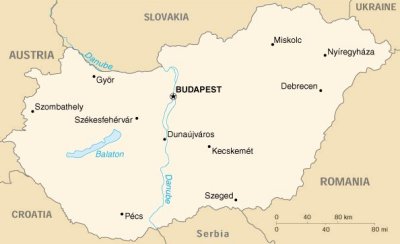Hungary was part of the polyglot
Austro-Hungarian Empire, which collapsed during World War I. The country fell under
communist rule following World War II. In 1956, a revolt and announced withdrawal from the
Warsaw Pact were met with a massive military intervention by Moscow. In the more open
GORBACHEV years, Hungary led the movement to dissolve the Warsaw Pact and steadily shifted
toward multiparty democracy and a market-oriented economy. Following the collapse of the
USSR in 1991, Hungary developed close political and economic ties to Western Europe. It
joined NATO in 1999 and is a frontrunner in a future expansion of the EU.
| Location: |
Central Europe, northwest of Romania
47 00 N, 20 00 E |
| Population: |
10,106,017 (July 2001 est.) |
| Area: |
total: 93,030 sq km
land: 92,340 sq km
water: 690 sq km
slightly smaller than Indiana |
| Climate: |
temperate; cold, cloudy, humid winters; warm
summers |
| Terrain: |
mostly flat to rolling plains; hills and low
mountains on the Slovakian border |
| Elevation: |
lowest point: Tisza River 78 m
highest point: Kekes 1,014 m |
|
